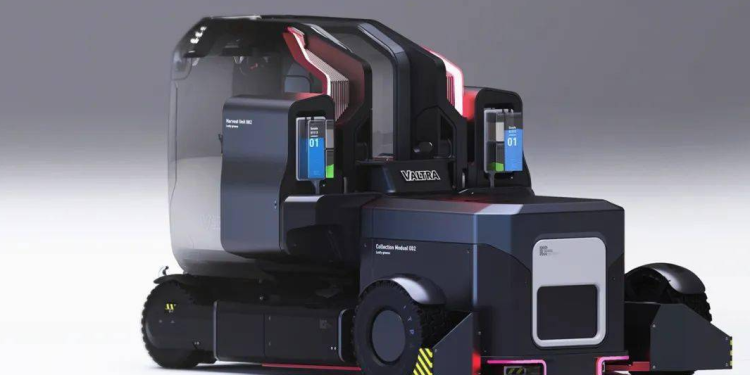Introduction
In today’s digital age, the concept of a connected home ecosystem has gained significant traction, offering homeowners unprecedented levels of convenience, efficiency, and security. A connected home ecosystem refers to the integration of various smart devices and technologies within a home environment, enabling seamless automation and control. This article explores the benefits, key components, integration methods, setup process, challenges, and future trends associated with creating a connected home ecosystem.
Benefits of a Connected Home Ecosystem
Convenience and Efficiency: One of the primary benefits of a connected home ecosystem is the unparalleled convenience it offers. By automating routine tasks such as adjusting thermostats, turning on lights, or locking doors, homeowners can save time and effort while enjoying a more comfortable living environment.
Enhanced Security: A connected home ecosystem enhances security by providing real-time monitoring and remote access to surveillance cameras, door locks, and alarm systems. Users can receive instant notifications of suspicious activities and take prompt action to safeguard their homes and belongings.
Energy Savings: Smart devices such as thermostats, lighting systems, and plugs enable homeowners to optimize energy usage and reduce utility bills. By automatically adjusting temperature settings, dimming lights, and powering off idle appliances, connected home ecosystems contribute to energy conservation and environmental sustainability.
Key Components of a Connected Home Ecosystem
Smart Speakers: Smart speakers serve as the central hub of a connected home ecosystem, allowing users to control other smart devices using voice commands. Popular smart speaker models include Amazon Echo, Google Home, and Apple HomePod.
Smart Thermostats: Smart thermostats enable users to remotely control and schedule heating and cooling systems, optimizing comfort and energy efficiency. Brands like Nest, Ecobee, and Honeywell offer advanced thermostat models with intuitive interfaces and energy-saving features.
Smart Lighting: Smart lighting systems allow users to customize lighting settings, adjust brightness levels, and create automated schedules. Products like Philips Hue, LIFX, and TP-Link offer a wide range of smart bulbs, switches, and fixtures to suit different preferences and needs.
Smart Security Cameras: Smart security cameras provide 24/7 surveillance of indoor and outdoor spaces, with features such as motion detection, night vision, and two-way audio communication. Brands like Arlo, Ring, and Wyze offer high-quality camera systems with cloud storage and mobile app integration.
Smart Plugs: Smart plugs convert traditional appliances into smart devices, enabling remote control and scheduling of power outlets. Users can turn devices on or off, set timers, and monitor energy usage using smartphone apps or voice commands.
Integration and Compatibility
Importance of Interoperability: Interoperability is crucial for seamless integration of smart devices within a connected home ecosystem. Devices should be compatible with common communication protocols such as Wi-Fi, Zigbee, Z-Wave, or Bluetooth to ensure smooth operation and communication.
Common Communication Protocols: Wi-Fi is the most widely used communication protocol for smart home devices, offering high-speed internet connectivity and compatibility with existing home networks. Zigbee and Z-Wave are wireless mesh networking protocols designed specifically for smart home automation, offering low power consumption and extended range.
Setting Up a Connected Home Ecosystem
Planning and Research: Before setting up a connected home ecosystem, homeowners should conduct thorough research to identify their needs, preferences, and budget constraints. They should create a list of desired smart devices and evaluate compatibility and interoperability requirements.
Installation and Configuration: Once the devices are selected, homeowners can proceed with the installation and configuration process. This may involve setting up smart hubs or bridges, connecting devices to the home network, and installing companion apps for remote control and management.
Testing and Optimization: After installation, users should test each device to ensure proper functionality and integration within the ecosystem. They can create automation routines, schedules, and scenes to optimize performance and tailor the system to their lifestyle and preferences.
Challenges and Considerations
Privacy and Security Concerns: Privacy and security are paramount when dealing with connected home ecosystems. Users should regularly update firmware, use strong passwords, and enable encryption to protect against cyber threats and unauthorized access to personal data.
Compatibility Issues: Compatibility issues may arise when integrating devices from different manufacturers or using proprietary communication protocols. Users should research compatibility requirements and choose devices that adhere to open standards for maximum interoperability.
Technical Support and Maintenance: Technical support and maintenance are essential for ensuring the long-term viability of a connected home ecosystem. Users should familiarize themselves with troubleshooting procedures, seek assistance from manufacturers or service providers when needed, and stay informed about software updates and security patches.
Future Trends in Connected Home Technology
Advancements in Artificial Intelligence: Artificial intelligence (AI) technologies will play a significant role in the evolution of connected home ecosystems. AI-powered assistants and algorithms will become increasingly adept at understanding user preferences, predicting behavior, and optimizing home automation routines for maximum efficiency and comfort.
Expansion of Internet of Things (IoT): The Internet of Things (IoT) will continue to expand, enabling seamless connectivity and interoperability between devices and systems. As more devices become IoT-enabled, expect to see greater integration and convergence across different smart home platforms and ecosystems.
Conclusion
Creating a connected home ecosystem offers numerous benefits, from increased convenience and security to energy savings and environmental sustainability. By integrating smart devices within a unified ecosystem and adhering to compatibility and interoperability standards, homeowners can enjoy a seamless automation experience tailored to their needs and preferences.

FAQs After The Conclusion
1. What are some common compatibility issues when setting up a connected home ecosystem? 2. How can I protect my connected home ecosystem from cyber threats and privacy breaches? 3. Are there any limitations to the number of devices that can be integrated into a connected home ecosystem? 4. Can I control my connected home ecosystem remotely when I’m away from home? 5. What are some potential future advancements in connected home technology? 6. Are there any government regulations or standards for connected home technology? 7. How can I troubleshoot common issues with smart devices in my connected home ecosystem? 8. What should I consider before upgrading or expanding my existing connected home system?




![Top 10 Smart Home Devices of [Current Year]: Reviews and Comparisons](https://digital-electron.com/wp-content/uploads/2024/02/image-42-350x250.png)








